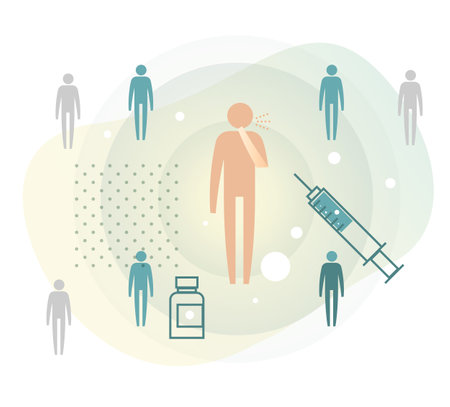Understanding Cognitive Impairments in the Workplace
When returning to work after an illness or injury, some individuals face challenges related to cognitive impairments. These difficulties can affect memory, attention, problem-solving, and other thinking skills essential for job success. Occupational therapy plays a vital role in helping clients overcome these barriers and re-engage in meaningful work.
Common Cognitive Impairments Affecting Work Participation
Cognitive impairments can result from various conditions such as traumatic brain injury (TBI), stroke, multiple sclerosis, or mental health disorders. In American workplaces, these issues often impact performance in tasks requiring concentration, planning, or adaptability. Below is a table outlining common cognitive impairments and their effects on job roles:
| Cognitive Impairment | Description | Impact on Job Performance (Examples) |
|---|---|---|
| Memory Problems | Trouble recalling instructions or details | Forgetting deadlines, missing steps in procedures at an office or warehouse |
| Attention Deficits | Difficulty focusing on tasks or switching focus when needed | Struggling to follow meetings in open-plan offices or getting distracted by background noise |
| Executive Dysfunction | Challenges with planning, organizing, or decision-making | Trouble prioritizing assignments as a project manager or organizing workflow as a retail worker |
| Processing Speed Issues | Slower ability to understand and respond to information | Taking longer to complete tasks during busy shifts at restaurants or call centers |
| Reduced Problem-Solving Skills | Difficulties finding solutions to unexpected problems | Struggling with troubleshooting equipment failures in manufacturing jobs |
The Impact of Cognitive Impairments on American Workers
Cognitive challenges can affect workers across all industries—from tech companies in Silicon Valley to healthcare providers in urban hospitals. For example, an administrative assistant may find it hard to remember new computer system protocols after a concussion. A delivery driver recovering from a stroke may struggle with route planning. These impairments not only influence job performance but also impact confidence and workplace relationships.
Recognizing Signs in the Workplace
- Mistakes that were not typical before an illness or injury
- Trouble keeping up with conversations or instructions during team meetings
- Difficulty adapting to changes in routines or work demands
- Avoiding tasks that require sustained attention or complex thinking
Why This Matters for Return to Work Programs
Understanding how cognitive impairments show up at work helps occupational therapists design effective interventions. By identifying specific challenges and connecting them to real-world job demands, therapy can be tailored for each client’s needs—helping Americans return to productive and fulfilling careers.
2. Assessment and Goal Setting
Understanding the Importance of Cognitive Assessments
For occupational therapists working with clients who have cognitive impairments, a thorough assessment is the first step in helping them return to work successfully. Cognitive abilities can affect attention, memory, problem-solving, and executive functioning—all essential for workplace success. By using evidence-based assessments, therapists can identify strengths and areas that need support.
Common Tools for Cognitive Assessment
| Assessment Tool | Description | When to Use |
|---|---|---|
| Montreal Cognitive Assessment (MoCA) | A quick screening tool for mild cognitive impairment | Initial evaluation or ongoing progress checks |
| Cognitive Assessment of Minnesota (CAM) | Comprehensive tool covering attention, memory, reasoning, and organization | In-depth understanding of client’s cognitive profile |
| Executive Function Performance Test (EFPT) | Assesses real-world executive functions through tasks like cooking or bill paying | Evaluating readiness for job-related tasks |
| Allen Cognitive Level Screen (ACLS) | Measures problem-solving and new learning skills | Matching job demands to client ability level |
Collaborative Goal Setting with Clients
Once cognitive abilities are assessed, the next step is setting goals that are both realistic and meaningful for the client. Occupational therapists in the U.S. often use a collaborative approach, ensuring goals reflect what matters most to the client while considering workplace demands.
Best Practices for Goal Setting:
- Client-Centered Approach: Ask clients about their work history, interests, and what returning to work means to them.
- S.M.A.R.T. Goals: Make sure goals are Specific, Measurable, Achievable, Relevant, and Time-bound.
- Cultural Sensitivity: Respect individual backgrounds and workplace cultures common in the U.S., such as valuing independence and teamwork.
- Family & Employer Involvement: With client consent, include family members or employers in goal-setting discussions to create a supportive environment.
- Regular Review: Set up times to review progress and adjust goals as needed.
Sample Client-Centered Return-to-Work Goals Table
| Goal Example | S.M.A.R.T. Breakdown | Cognitive Skill Targeted |
|---|---|---|
| Improve ability to follow multi-step instructions at work within 4 weeks | Specific: Multi-step instructions Measurable: Completion tracked weekly Achievable: Practice with therapist Relevant: Matches job task Time-bound: 4 weeks |
Attention & Sequencing |
| Increase accuracy in daily reports by reducing errors to fewer than 2 per week within 6 weeks | Specific: Report errors Measurable: Number of errors Achievable: Use checklists Relevant: Job requirement Time-bound: 6 weeks |
Memory & Attention to Detail |
| Develop a strategy to manage distractions during team meetings over the next month | Specific: Distraction management Measurable: Reports from supervisor/client self-reflection Achievable: Teach coping techniques Relevant: Workplace setting Time-bound: 1 month |
Sustained Attention & Self-Regulation |
This structured approach helps occupational therapists provide individualized support so clients with cognitive impairments can work towards returning to their jobs confidently and safely.

3. Evidence-Based Interventions and Strategies
Overview of Occupational Therapy Approaches for Cognitive Impairments
When supporting clients with cognitive impairments as they return to work, occupational therapists in the United States use a variety of practical, evidence-based interventions. These strategies are tailored to the individual’s specific needs and the demands of their job, focusing on improving attention, memory, executive function, and problem-solving skills that are essential for workplace success.
Commonly Used Work-Related Strategies
| Intervention | Description | Workplace Application |
|---|---|---|
| Cognitive Retraining | Structured exercises to improve attention, memory, and reasoning skills. | Using computer-based programs or paper tasks during therapy sessions to build cognitive strength for work tasks like data entry or scheduling. |
| Compensatory Strategies | Teaching clients to use tools and techniques to bypass cognitive challenges. | Encouraging use of planners, checklists, alarms, and smartphone reminders to manage tasks and deadlines at work. |
| Environmental Modifications | Adjusting the work environment to reduce distractions or simplify tasks. | Recommending noise-canceling headphones or organizing workspace layout to minimize interruptions and support focus. |
| Task Simplification & Sequencing | Breaking down complex activities into smaller, manageable steps. | Developing step-by-step guides or flowcharts for multi-step work processes such as filing paperwork or operating machinery. |
| Psychoeducation & Advocacy Training | Educating clients about their cognitive challenges and teaching self-advocacy skills. | Role-playing conversations with supervisors to request reasonable accommodations under the Americans with Disabilities Act (ADA). |
Real-World Examples in American Workplaces
- Email Management Training: Therapists may help clients set up email folders and teach rules for sorting messages so that important communications are not missed.
- Time Management Workshops: Clients practice using digital calendars with reminders to stay on track with meetings and project deadlines.
- Cue Cards and Visual Supports: For jobs requiring frequent customer interaction (like retail or hospitality), therapists might create cue cards with scripts or checklists for client-facing tasks.
The Role of Collaboration
A key aspect of these interventions is collaborating with employers, human resources departments, and vocational counselors. Occupational therapists often facilitate communication between the client and their workplace to ensure that supports are put in place and sustained over time.
4. Workplace Modifications and Advocacy
Understanding the Importance of Workplace Modifications
Returning to work can be challenging for clients with cognitive impairments. Occupational therapists play a key role in helping both employees and employers understand how simple changes at work can make a big difference. These modifications help individuals perform their jobs more effectively and safely, supporting their independence and confidence on the job.
Types of Environmental Modifications
Environmental modifications are changes to the physical or social workplace that remove barriers for people with cognitive impairments. Here are some common examples:
| Modification Type | Examples |
|---|---|
| Physical Space Adjustments | Labeled cabinets, clear signage, minimizing clutter, color-coded files |
| Lighting and Noise Control | Task lighting, noise-canceling headphones, quiet workspaces |
| Workstation Organization | Desk organizers, visual schedules, checklists posted at the workstation |
| Flexible Scheduling | Frequent breaks, modified start/end times, part-time hours during transition back to work |
Assistive Technology Solutions
Assistive technology can support memory, organization, and attention challenges. Some helpful tools include:
- Reminder apps: Help manage appointments and tasks using smartphones or computers.
- Digital recorders: Allow recording meetings or instructions for later review.
- Speech-to-text software: Converts spoken words into written text for documentation tasks.
- Timers and alarms: Assist with time management and task switching.
- Noise-canceling headphones: Improve focus by reducing distractions in open offices.
Navigating the Americans with Disabilities Act (ADA)
The ADA protects employees with disabilities by requiring employers to provide reasonable accommodations unless doing so would cause undue hardship. Occupational therapists can help clients understand their rights under the ADA and advocate for what they need at work. Common reasonable accommodations include modifying job duties, adjusting work schedules, allowing assistive devices, or providing additional training.
How Occupational Therapists Can Advocate for Clients
- Educate clients: Help them recognize which accommodations may benefit them most.
- Liaise with employers: Communicate recommended modifications in a clear and supportive manner.
- Create documentation: Provide written recommendations to support accommodation requests.
- Empower self-advocacy: Teach clients how to discuss their needs confidently and professionally with supervisors or HR staff.
Sample Reasonable Accommodations Table Under ADA
| Cognitive Challenge | Potential Accommodation | Description/Example |
|---|---|---|
| Memory Difficulties | Written instructions, reminder systems | Provide step-by-step guides or digital reminders for daily tasks. |
| Poor Attention/Focus | No-distraction workspace, flexible deadlines | Create a quiet area or allow extended time for complex assignments. |
| Trouble Organizing Tasks | Checklists, visual schedules | Create daily checklists or use calendar apps to structure the day. |
| Difficulties With Communication | Email follow-ups, speech-to-text tools | Email summaries after meetings or use assistive communication devices. |
5. Collaboration with Employers and Interdisciplinary Teams
Building Strong Partnerships for Successful Return-to-Work Plans
When helping clients with cognitive impairments return to work, occupational therapists (OTs) play a crucial role in working closely with employers, human resources (HR), and other professionals. In the American workforce, this collaboration ensures that the return-to-work process is smooth, supportive, and truly individualized.
Key Partners in the Return-to-Work Process
| Partner | Role in Return-to-Work |
|---|---|
| Employers/Supervisors | Provide job descriptions, set workplace expectations, implement accommodations, monitor progress |
| Human Resources (HR) | Coordinate leave policies, facilitate communication, support legal compliance (e.g., ADA) |
| Occupational Therapists (OTs) | Assess client needs, recommend interventions and adaptations, educate team members |
| Other Health Professionals (PTs, SLPs, Psychologists) | Offer specialized assessments and therapies as needed |
| The Client/Employee | Share experiences, participate in planning, give feedback on interventions |
Effective Communication Strategies
- Regular Team Meetings: Schedule check-ins to discuss progress and challenges.
- Email Updates: Use clear and respectful language to keep everyone informed.
- Confidentiality: Always protect client privacy by sharing only necessary information.
- Cultural Sensitivity: Respect diverse backgrounds and needs within the American workplace.
Customizing Workplace Accommodations
An important part of collaboration is identifying reasonable accommodations that fit both the employees needs and the company’s resources. This might include flexible scheduling, task modifications, assistive technology, or environmental adjustments. OTs can help employers understand how these changes benefit both the employee and the organization.
Examples of Common Accommodations for Cognitive Impairments:
- Written instructions or checklists for tasks
- Quiet workspace or noise-canceling headphones
- Extra time for completing assignments
- Job coaching or mentoring support
- Use of reminder apps or alarms on digital devices
The Value of Interdisciplinary Collaboration
No single professional has all the answers. By bringing together expertise from different fields—healthcare providers, HR professionals, supervisors, and the employee—a more holistic plan can be created. This approach not only improves outcomes but also supports long-term success at work for people with cognitive impairments.


